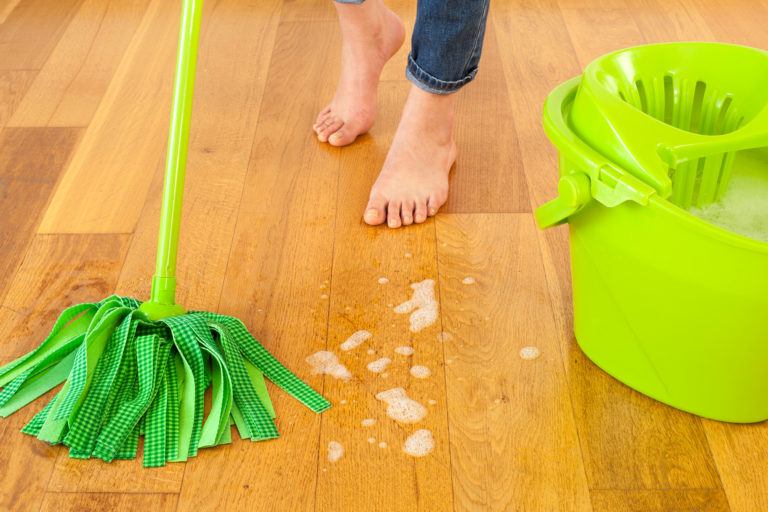
Quick Tips
- Microfiber Dust Mop
- Vacuum Cleaner with Hardwood Setting
- pH-Neutral Hardwood Floor Cleaner
- Soft, Lint-Free Cloths
- Floor Mats and Area Rugs
- Furniture Pads
- Daily Dusting
- Weekly Vacuuming
- Bi-Weekly Damp Mopping
- Immediate Spill Management
- Monthly Polishing
- Seasonal Deep Cleaning
Imagine walking into your home after a long day, the soft glow of the setting sun casting a warm hue across your living room. Your hardwood floors, once the pride of your home, now appear dull, marred by scratches and a layer of grime that seems to cling despite your best efforts. It’s a scene all too familiar, yet entirely avoidable. The secret to preserving the timeless elegance of hardwood lies not in expensive treatments or constant renovations, but in understanding the art of proper cleaning and maintenance.
The Importance of Proper Hardwood Floor Care
Hardwood floors are more than just a design choice; they’re an investment. They add value to your home, exude a classic charm, and with the right care, can last for generations. However, their longevity and appearance heavily depend on how well they’re maintained. Improper cleaning habits can lead to a host of issues:
- Scratches and Surface Damage: Dirt and debris act like sandpaper underfoot, grinding away at the finish.
- Warping and Cupping: Excess moisture from wet mopping or spills can seep into the wood, causing it to swell and distort.
- Fading and Discoloration: Using harsh chemicals or allowing the sun to constantly hit unprotected floors can lead to unsightly color changes.
Understanding these potential pitfalls underscores the need for a thoughtful approach to hardwood floor care.
Essential Supplies for Cleaning Hardwood Floors
Embarking on the journey to pristine hardwood floors requires assembling the right arsenal of tools and products. Here’s what you’ll need:
- Microfiber Dust Mop: Unlike traditional brooms, microfiber mops trap dust and debris without scratching the surface.
- Vacuum Cleaner with Hardwood Setting: A vacuum equipped with a hard floor setting ensures that the beater bar is disengaged, preventing scratches.
- pH-Neutral Hardwood Floor Cleaner: These cleaners effectively remove grime without harming the finish. Avoid acidic or abrasive cleaners, as they can dull the shine and damage the wood.
- Soft, Lint-Free Cloths: Ideal for spot cleaning and drying, ensuring no water is left to seep into the wood.
- Floor Mats and Area Rugs: Strategically placed at entryways and high-traffic areas, they reduce the amount of dirt and moisture reaching your floors.
- Furniture Pads: These prevent scratches and dents from furniture legs.
A Step-by-Step Guide to Cleaning Hardwood Floors
Achieving gleaming hardwood floors involves more than just a quick sweep and mop. Follow this comprehensive guide to ensure your floors remain in top condition:
- Daily Dusting
- Why: Regular removal of dust and debris prevents scratches and maintains the floor’s luster.
- How: Use a microfiber dust mop to gently sweep across the floor’s surface, capturing particles that could cause damage.
- Weekly Vacuuming
- Why: Vacuuming reaches into crevices and between floorboards where dust mops can’t.
- How: Utilize a vacuum with a hardwood floor setting or attachment. Ensure the beater bar is turned off to prevent scratching.
- Bi-Weekly Damp Mopping
- Why: Addresses spills and stains that dusting and vacuuming can’t.
- How: Lightly mist a section of the floor with a pH-neutral hardwood floor cleaner. Using a damp (not wet) microfiber mop, clean following the wood grain. Immediately dry the area with a soft cloth to prevent moisture damage.
- Immediate Spill Management
- Why: Preventing liquids from seeping into the wood protects against warping and staining.
- How: Blot spills with a dry, soft cloth. For sticky substances, use a damp cloth with a small amount of hardwood floor cleaner, then dry immediately.
- Monthly Polishing
- Why: Restores shine and adds a protective layer against wear.
- How: After cleaning, apply a hardwood floor polish according to the manufacturer’s instructions. Use a clean, dry mop to spread the polish evenly, allowing it to dry completely before resuming foot traffic.
- Seasonal Deep Cleaning
- Why: Over time, even well-maintained floors accumulate grime that regular cleaning can’t remove.
- How: Consider hiring professionals for deep cleaning and refinishing. If DIY-ing, use a specialized hardwood floor cleaning machine, ensuring it’s suitable for your floor type.
Additional Considerations and Professional Techniques
While regular maintenance is key, sometimes your floors may require extra attention:
- Dealing with Scratches: For minor scratches, a touch-up kit matching your floor color can work wonders. Deeper gouges might necessitate professional sanding and refinishing.
- Humidity Control: Wood expands and contracts with humidity changes. Using a humidifier in dry seasons and a dehumidifier in humid seasons can prevent warping and gaps.
- Avoiding Steam Cleaners: While they promise a deep clean, steam cleaners can force moisture into the wood, leading to damage. Stick to the methods outlined above for safe cleaning.
Conclusion
Your hardwood floors are a testament to your home’s character and your personal style. By dedicating time to proper cleaning and maintenance, you not only preserve their beauty but also ensure they stand the test of time. Embrace these practices, and let your floors continue to tell the story of your home for years to come.
For a visual demonstration and additional tips on maintaining your hardwood floors, consider watching the following video: